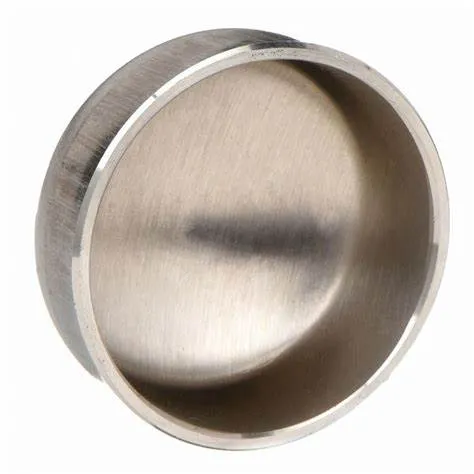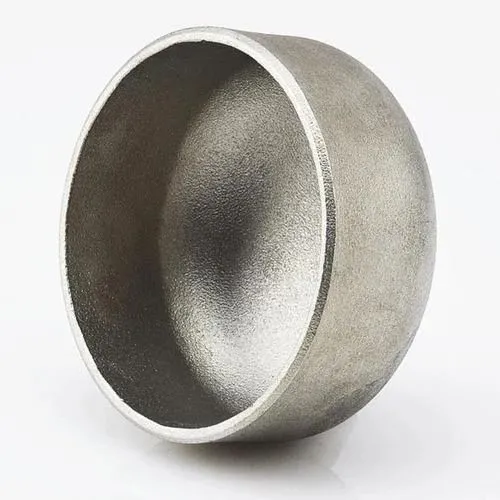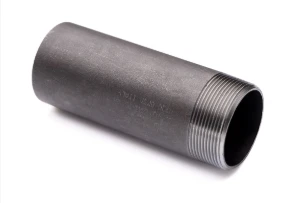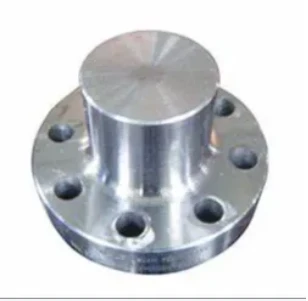JIS B2311 is in Japanske yndustriële standert dy't butt-welding piipfittings omfettet, ynklusyf kappen brûkt yn pipingsystemen. Butt-welding caps tsjinje it doel fan it sluten fan it ein fan in piip, it bieden fan in segel om lekkage of fersmoarging te foarkommen. Hjir is in ynlieding foar JIS B2311 butt-welding caps:
- 1. JIS B2311 Standard:
- - JIS B2311-standert spesifiseart de easken foar it ûntwerp, dimensjes, materialen, fabrikaazje en testen fan butt-welding-fittings, ynklusyf kappen, yn piipsystemen.
- - De standert soarget derfoar dat kappen produsearre yn oerienstimming mei JIS-noarmen foldogge oan kwaliteitsnoarmen en kompatibel binne mei oare pipingkomponinten.
- 2. Butt-Welding Cap:
- - In butt-welding cap, neffens JIS B2311, is in fitting ûntworpen om it ein fan in piip feilich te dekken en te fersegeljen, beskerming te bieden en de yntegriteit fan it pipingsysteem te behâlden.
- - Caps wurde brûkt yn situaasjes dêr't de piip ein fereasket sluting, itsij permanint as tydlik, om foar te kommen lekkage, fersmoarging, of te foarsjen in finish oan it systeem.
- 3. Materiaal en konstruksje:
- - Butt-welding caps ûnder JIS B2311 spesifikaasjes binne beskikber yn ferskate materialen lykas koalstof stiel, RVS, en alloy stiel te foldwaan oan ferskillende applikaasje easken.
- - Dizze kappen wurde produsearre mei standerdisearre boumetoaden om in sterke en lekfrije ferbining te garandearjen by laske oan 'e ein fan in piip.
- 4. Oanfraach en foardielen:
- - Butt-welding caps fine applikaasjes yn ferskate yndustry, ynklusyf oalje en gas, gemyske prosessen, wettersuvering planten, en mear dêr't pipe eintsjes moatte wurde capped feilich.
- - Caps jouwe beskerming oan piipeinen fan miljeu-eleminten, foarkomme fersmoarging en helpe de skjinens en yntegriteit fan it pipingsysteem te behâlden.
- 5. Ynstallaasje en welding:
- - Goede ynstallaasjepraktiken, ynklusyf juste ôfstimming, tarieding fan it piipein, en lastechniken, binne essensjeel by it ynstallearjen fan butt-welding-kappen om in strakke en lekbestindige segel te garandearjen.
- - Welding is in mienskiplike metoade foar it befestigjen fan kappen oan pipen, it leverjen fan in feilige en permaninte sluting dy't druk, temperatuerfariaasjes en floeistofstream yn it systeem kin wjerstean.
- Gearfetsjend, JIS B2311 butt-welding caps binne krúsjale komponinten brûkt yn piping systemen te segel en beskermje it ein fan pipen feilich. Dizze kappen foldogge oan standerdisearre easken om kwaliteit, betrouberens en kompatibiliteit te garandearjen binnen yndustriële tapassingen wêr't piipsluting en beskerming nedich binne.
What Is a Butt Welding Cap and How Is It Used in Industrial Piping?
In industrial piping systems, end-of-line sealing and branch closures require robust solutions. A butt welding cap serves as a critical component for terminating pipes securely. By providing a seamless, welded closure, this fitting maintains system integrity, prevents leaks, and supports compliance with industry standards.
What Is a Butt Welding Cap?
A butt welding cap—also called a pipe end cap or buttweld end cap—is a round fitting designed to close off the end of a pipe. It’s manufactured to match the pipe’s outer diameter and schedule, with either a hemispherical or flat face. To install, both the pipe end and cap are beveled to form a V‑groove, enabling full‑penetration, fusion welds. Common materials include carbon steel, stainless steel, nickel alloys, and other engineered grades, chosen to satisfy pressure, temperature, and corrosion‑resistance requirements.
How Is Butt Welding Cap Used in Industrial Piping?
Butt welding caps find application across oil & gas, petrochemical, power generation, water treatment, and general process industries for both permanent and temporary closures. During hydrostatic testing, technicians install caps to seal off sections of piping while monitoring for leaks. In new construction or retrofit projects, caps terminate branch lines, future tie‑in spools, or dead‑end mains until system expansion. Welders prepare each joint by cleaning and beveling surfaces, aligning the cap precisely, and executing a root pass followed by filler passes per the qualified Welding Procedure Specification (WPS). Post‑weld heat treatment and non‑destructive examination (NDE)—such as radiography or ultrasonic testing—verify weld integrity and compliance with ASME B16.9 and related standards. Additionally, temporary caps enable safe isolation during maintenance, allowing for segment testing and dewatering under regulatory protocols.
Benefits and Best Practices
Butt welding caps offer a smooth‑bore transition that minimizes flow disruption and stress concentration. Their full‑penetration welds deliver exceptional structural strength and leak resistance. To optimize performance, engineers should:
Select caps with matching material grades and wall thicknesses
Adhere to proper bevel angles and joint fit‑up tolerances
Follow qualified WPS protocols rigorously
Consider cladding or protective coatings in corrosive environments to extend service life
Regular inspection and thorough documentation ensure long‑term reliability and safe operation under demanding conditions.
Butt welding caps are indispensable components for achieving durable, leak‑proof pipe terminations in a wide range of industrial applications.
Butt Welding Cap FAQs
What is a butt welding cap?
|
What materials are commonly used?
|
What standards govern butt welding caps?
|
How are butt welding caps installed?
|
Where are butt welding caps typically used?
|
What are the advantages of threaded caps?
|
















